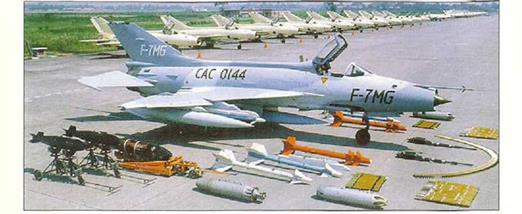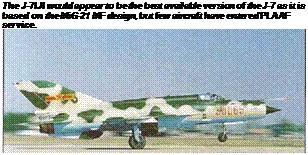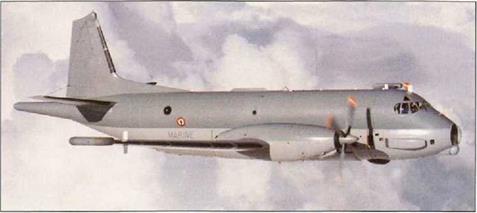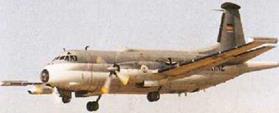Chengdu J-7 (F-7)
|
iff* |

|
C |
hina was granted ajicence to manufacture the MiG-21F-13 anc its I umanskii R-11F-300 engine in 1961, as the J-7. A Shenyang-built prototype Lew on 17 January 1966 followed by a few development aircraft, and full production began at Chengdu in June 1967. Ihe production-standard J-7I entered service in small numbers anc was replaced by the J-7II, powered by an uprated WP7B turbojet. The J-711 has become the standard production variant for the People’s Liberation Army Air Force, and the baseline for a range of improved export aircraft.
Shenyang used the more advanced MiG-21 MF to develop the J-7III This version is powered by a WP13 engine, has day/night capability thanks to its JL-7 radar, increased fuel capacity and the characteristic enlarged spine of the MiG-21 MF (compared to earlier versions). Flowover, the J-7III has been slow to enter Chinese service and the first examples were not ready until 1992. Mo J 7111s are understood to have been exported.
Albania and Tanzania wore customers for the first export version of the of the J-71, the F-7A. The improved F-7 В (J-711) was delivered to Egypt, Iraq, Sudan and Zimbabwe. The F-7B can be armed with the MAlRA R.550 Magic air-to-air missile (copied in China as the PL-7). A hybrid version has been deliv-
The F-7MG is a development of the J-7//. While it retains the familiar lines of an early-model MiG-21, it boasts an entirely new wing design.
ered to Sr Lanka as the F-7BS. These aircraft have the fuse.-age, tail and systems of the F-7B with the four-hardpoint wing of the F-7M.
Western avionics were incorporated for the first t me in the F-7M Airguard, which was equipped with a GEC-Marconi HUDWAC, a Skyranger ranging radar, air data computer, radar altimeter, IFF and other improved systems. F-7Ms have been delivered to Bangladesh, Iran and Myanmar (Burma).
Pakistan has acquired its own version of the F-7M, the F-7P Airguard which can carry four AIM-9 Sidewinder missiles and has a Martin-Baker Mk 10L ejection seat. A developed version of this aircraft, the F-7MP, is equipped with the Italian FIAR Grifo 7 fire-control radar and a further improved (western-sourced) avionics fit.
Shenyang has moved on to develop Ihe export – driven F-7MG with an entirety new double delta wing and WP13F engine. Pakistan is reported to be acquiring up to 100 aircraft as the F-7PG, while the PLAAF aerobatic team ‘1st August’ is equipped with an equivalent version, the J-7EB.
China has developed a two-seat training version of the J-7, the JJ-7 (export version FT-7). This aircraft has been developed by Guizhou and is based on the J-7ll/MiG-2lUS.
 Specification: Chengdu F-7M Airguard Powerplant: one 59.82-kll (13,448 lb st)
Specification: Chengdu F-7M Airguard Powerplant: one 59.82-kll (13,448 lb st)
I iyang |LMC) Wopen-78(BM] turbojet Dimensions: wing span 7 15m {23 ft 5/ in), length 13.95 m (45 ft 9 in) excluding probe; height 4.10 m (13 ft 5/ in)
Weights: empty 5275 kg (11,629 !b); normal take off 7531 kg (16,603 o)
Performance: maximum level speed 2175 kmh (1.350 mph); service ceiling 17500 m (57.420 ft); combat radius 850 km (5?0 miles) on a hi-hi-hi air superiority mission with two AIM-9 missiles and three 500-litre (132-US gal) drop tanks
Armament two Type 30 30-mm cannon with 60 rpg, plus 1000 kg (2,205 lb) of ordnance
Dassault Atlantic, Atlantique

|
A |
1957 NATO requirement for e long-range maritime patrol aircraft inspired the French-designed Breguet Br.1150 Atlantic. Breguet set up the pan – European SECBAT consortium with partners in Belgium, Holland. Germany and Italy to provide components for the aircraft, which was assembled at Toulouse.
The Atlantic is a twin-turboprop maritime patrol and anti-submarine aircraft, with a crew of 12, It was originally equipped with a Thomson-CSF search radar and US-supplied mission systems, similar to those of the P-2 Neptune. A ‘doublebubble’ fuselage provides for a 9.15-m (30-ft> long internal weapons bay underneath the main cabin floor. The prototype aircraft made rts maiden flight on 21 October 1961. The Atlantic became the standard patrol aircraft for the French, German and Italian navies. It entered service in 1965 with France and German taking delivery of 40 and 20 aircraft, respectively. Another nine were delivered to the Dutch navy between 1969 and 1972 (later replaced by P-З Orions) and Italy took delivery of 18 Atlantics between 1972 and 1974. Beyond the SECBAT partner nations, the only export sale was three former – French aircraft delivered to Pakistan in 1975-76.
Germany converted five aircraft to serve as ‘Peace Peek’ intelligence-gathering platforms, using a US-supplied Sigmt/ЕІІпт system. The ‘Peace Peek’ aircraft are outwardly very similar to the standard Atlantic, but they are fitted with distinctive
The upgraded Atlantique is now the standard maritime patrol aircraft in French service. It is most readily identified by its nose-mounted FUR turret.
underwing antennas. In recent years Italy has upgraded its aircraft, adding a new radar and mission avionics. The upgraded aircraft have ben painted in an overall grey scheme and now carry a prominent antenna housing above the extended dorsal sp:ne fairing.
Dassault took over Breguet in 1971 and it led the effort to develop an improved version of the original Atlantic, the Atfantic INouvelle Generation (AIMGI.
The result of this was the Dassaull Atlantique (or ATL 2) a version of the Atlantic with new avionics and some structural improvements/strengthening. The sole customer for the Atlantique is France’s Aeronavale which acquired 30 aircraft (down from a planned total of 42). A prototype flew in May 1981, the first production standard Atlantique flew in October 1988 and deliveries began in 1989 The final example was delivered in January 1998. Dassault is now offering an improved Atlantique 3 design – with an FFIS cockpit, AF2100 turboprops and an all-new mission system – to replace the first-generation Atlantics in Italy and Germany.
Germany’s Atlantics have been upgraded to carry wingtip ESM pods> and this aircraft is also carrying an undenting FUR pod (to port)
|












